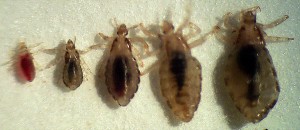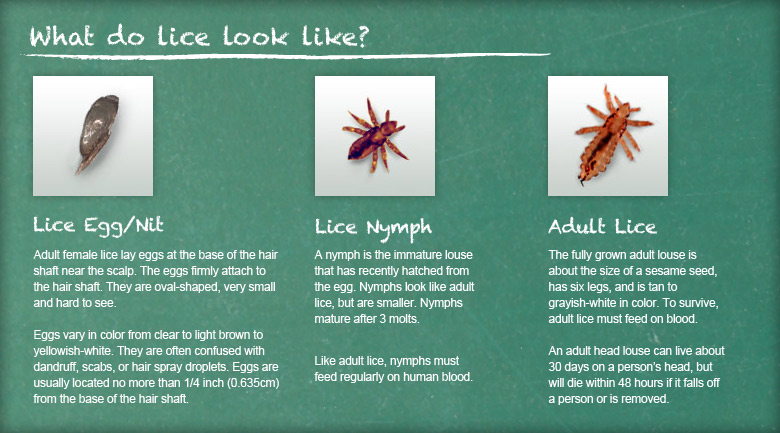You may suspect that your child has lice if he or she has any of the following symptoms:
- Tickling feeling of something moving in the hair.
- Excessive itching, usually caused by an allergic reaction to the bites.
- Irritability and difficulty sleeping; head lice are most active in the dark.
- Sores on the head caused by scratching.
First, look closely for crawling nymphs or adults. Finding them can be difficult. There are typically few of them, and they can move quickly. However, they are usually visible to the naked eye. Using a magnifying lens and/or light may help.
Next, look for nits (eggs). In an active case of head lice, you’ll most likely find nits within 1/4 inch of the scalp. If you only find nits more than 1/4 inch from the scalp, the infestation could be old and may not need to be treated.
If you are still unsure, take your child to the doctor, a school nurse or other health care provider. Or call the 24-hour Littlebugs hotline at 855.804.8887 and we’ll give you advice and guidance.
Nits usually take about 8-9 days to hatch.
Lice nymphs mature into adults about 9-12 days after hatching from the egg. They shed their exoskeleton 3 times within the first week before becoming adults.
Adult lice can live about 30 days on a person’s head. A female louse can lay 150 eggs in her lifetime. If eggs come off the host, they usually die within 48 hours.


